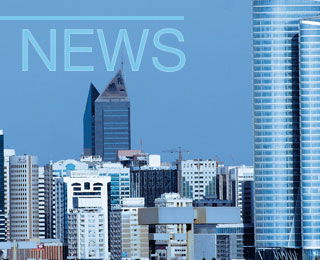Holcim highlighted its cost cutting programme and the growth potential in its emerging markets at its latest investor and analyst event, which took place on 3-4 September in Zurich, Switzerland.
While a global recovery remains elusive, emerging markets continue to grow. Holcim noted its net sales have increased above their 2007 level, from US$22.543bn to US$23.306bn in 2011. However, higher costs have led to EBITDA falling by US$1.3bn from US$5.775bn to US$4.447bn over the same period. Nevertheless, the company is upbeat about its future. "The trough seems over: since Q3 2011, there is a positive trend on like-for-like operating EBITDA variance," says Thomas Aebischer, Holcim Group CFO. "Holcim has high upside potential on cash flow generation and is well financed, with a balanced maturity profile, a strong cash position and access to a wide range of capital markets," he adds. Through its Holcim Leadership Journey, the company expects to earn at least its after-tax return on invested capital (ROIC) of eight per cent in 2014.
In May, Holcim announced its plan to boost its operating profit by more than CHF1.5bn in 2014, without any improvement in market conditions. To enable this advance, the company plans to carry out a number of initiatives. Around CHF1bn is to come from its Cost Leadership programme. Under this initiative, it intends to optimise logistics in Latin America and US procurement as well as standardise business processes in Europe with each expected to reduce costs by more than CHF250m a year. In addition, the amount of procurement handled at group level is due to be increased from CHF600m to CHF4bn.
The CHF500m balance will be sourced via a Customer Excellence drive which includes value management and pricing policies.
Holcim also highlighted the growth potential in Latin America and Asia, particularly focussing on Indonesia and India where an annual 6-8 per cent GDP advance is expected until 2020. However, longer-term concerns for India remain as Jefferies analysts commented in a research note: "..., even assuming its forecast of an average 8.7 per cent increase in demand is correct, the Indian cement industry's capacity utilisation only increases to 85 per cent in 2016. We therefore continue to assume only a slow recovery in pricing."
Meanwhile, in Indonesia, Holcim expects the annual rate of demand to slow from 8.3 per cent (2005-12) to 6.3 per cent over the next four years and then further down to six per cent (2016-20). However, expected additions to capacity will not avoid the need for imports, resulting in strong prices and profitable business for Holcim.
CEO Bernard Fontana noted that Latin America has been a "consistently performing region and offers potential for growth and better returns." The company gives a cautious 4.3 per cent market growth for Brazil to 95Mt in 2020 while for Colombia, it anticipates a cement demand of 17Mt by 2020. To position itself for this market growth, Holcim has channelled key efforts in branding and integrated retail solutions, which have been applied in the region and beyond. It expects to continue improving its processes and operations through regional sourcing and sharing of services.
However, the company's strategy of adding significant capacity in these markets does raise some concerns. For example, in India, the firm's profitability has declined in recent years as temporary excess capacity depressed prices. "This may be repeated in Indonesia and Brazil in the next few years, as many of Holcim's competitors are also planning to add new capacity there. Critics argue that Holcim's strategy, and indeed those of many of their competitors, appears to remain the maintenance of market share, rather than maximising profitability and returns," warns a recent research note from Jefferies.

Buzzi increases tender offer to Gulf Cement Co
After the offer document submitted on 13 March 2025 for TC Mena Holdings Ltd, a subsidiary of ...